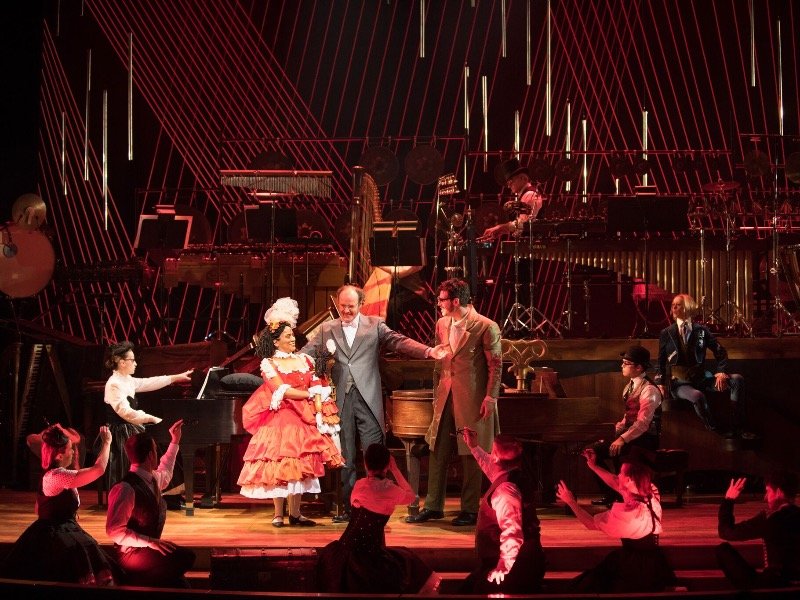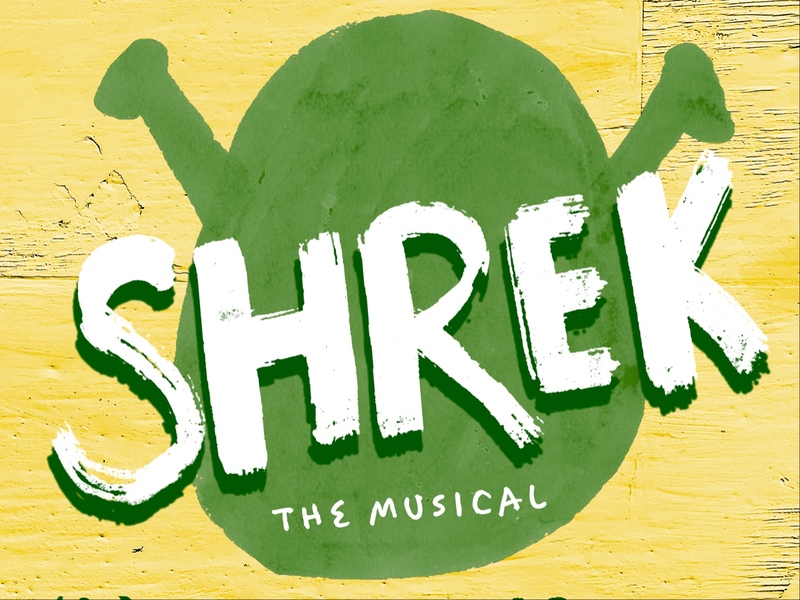When I read the synopsis for the Skylight Opera Theatre’s "Tales of Hoffmann" before the show on Saturday night, I said, "Well, that can’t be right." But the woman sitting next to me, an opera aficionado, assured me that a poet falling in love with a mechanical doll and the inventor selling eyeballs were standard parts of the first act. "It’s opera," she said plainly. "All the plots are ridiculous."
Between the reassurance of my fellow audience member and the brilliantly bizarre staging of the Offenbach piece, I settled in for a delightful evening of extreme contrasts – a lush score of the 19th century opera juxtaposed with fantastic stage pictures that draw on goth, steampunk and early science fiction. It’s a combination that is utterly entertaining where anything and everything could happen.
As the project’s gifted director, Jill Anna Ponasik, explains in the program notes, this version of "The Tales of Hoffmann" is "an adaptation based on an opera, based on a play, based on a collection of short stories by the early surrealist author E.T.A. Hoffmann." Sung in English instead of French, it is condensed in all aspects – using fewer singers (13) and a pared down orchestra (only pianos, percussion and harp) to present a slightly shorter version (two and a half hours with two intermissions) of the essential story. But instead of smaller, the result feels essential and more concentrated.
The fantastical story focuses on the tortured poet Hoffmann (John Kanikledes), who isn’t just unlucky in love – he's a walking disaster. Lovesick and beaten after pursuing three impossible matches, Hoffmann’s muse (Diane Lane) helps him work through writer’s block by recounting these sad and incredible tales. Once his twisted, broken heart is unburdened, he can happily resume his only healthy relationship – with his shape-shifting muse of poetry. The words start flowing, and the world is better for it.
As the dazed and disheveled poet Hoffmann, Kanikledes does most of the heavy lifting in the opera. His warm tenor fills the theater with both the giddiness of new love and its tragic loss, desperation and despair. Dressed in a swanky, celery-colored silk suit, embroidered with red flora on the arms, he is a tender flower in a dark woods.
Fortunately there also are plenty of smaller, juicy roles for the women in the opera. Cross-dressing and appearing as his best friend Nicklausse, muse Diane Lane is an impish pal in turquoise velvet who rolls her eyes at Hoffmann’s misguided antics along with the audience. Her textured soprano shines at the beginning of Act II as she tries to wrestle her petulant charge back to his poetry.
In a nice parallel, the three objects of Hoffmann’s attraction also double as villains. A mechanical doll who cannot feel love (Cecilia Davis) later appears as an evil quack doctor; a frail girl in mourning who can no longer sing (Susan Wiedmeyer) re-enters as a fierce, feather-caped devil; and a courtesan whose only interest in Hoffmann is to dupe him so she can win an enormous diamond (Ariana Douglas) first appears as a blood-spattered mad scientist, somewhere between Dr. Frankenstein and Dr. Emmet Brown from "Back to the Future."
Each performer embraces the eccentricities of these characters. Davis is jarring as the robot girl, moving and singing in a stiff, mechanical fashion, grasping her twin: a miniature doll with glowing red eyes. And Douglas is cold beauty incarnate as the gorgeous temptress in red and black taffeta, draped in dying roses, enchanted only by sparkling and equally cold jewels. Her smaller but self-assured soprano delighted in collecting men’s hearts and souls. But as the tragic and suffering Antonia, Wiedmeyer was the most impressive of the three. Her enchanting voice, like Kanikledes’, scaled the heights of love and the depths of loss and torment. As the virginal victim in the second tale, it was even more satisfying to see her re-emerge as a devious sorcerer, determined to own Hoffmann’s very reflection.
The other important "characters" in the piece were the musicians – all positioned prominently onstage – and the bold visual style of the production, brought to life by scenic designer Lisa Anne Schlenker, lighting designer Jason Fassl and costume designer Sonya Berlovitz. As if the story was caught within an enormous musical machine, the stage held functional pianos as well as those tipped on end. A platform full of countless percussion pieces towered over the action, while the strings of an enormous piano criss-crossed to form the backdrop. An oversized neck of a violin served as stairsteps, and characters floated across the stage on instrument chariots, illuminated with strings of neon lights. Fassl’s shrill red washes punctuated with bright blue made the black and white clad chorus look even more like extras from a Tim Burton film.
This heightened sense of horror underscores that there is so much to fear in Hoffmann’s world: science, industrialization, medicine, the supernatural and the scheming, unfeeling, fragile states of women. It is truly a poet’s nightmare. But a world that audiences will revel in.







